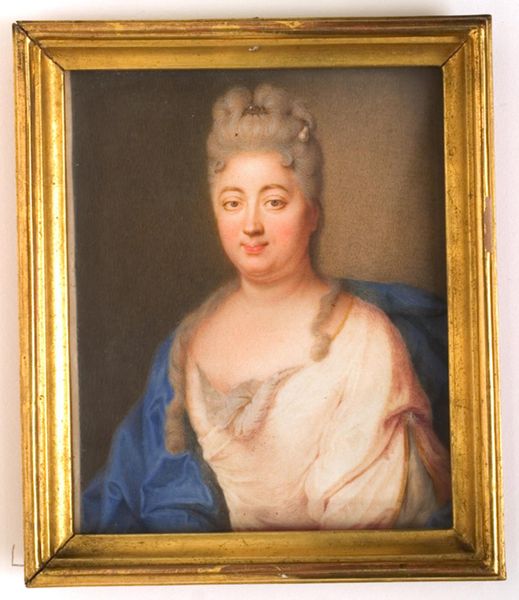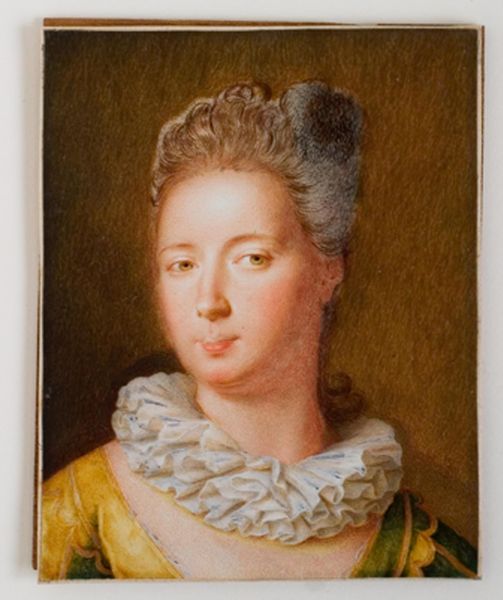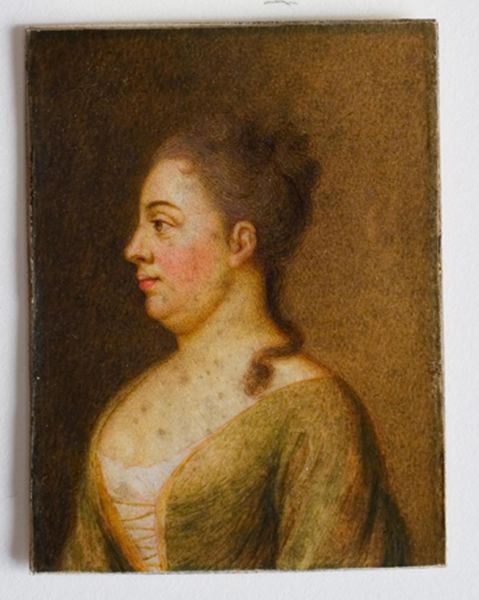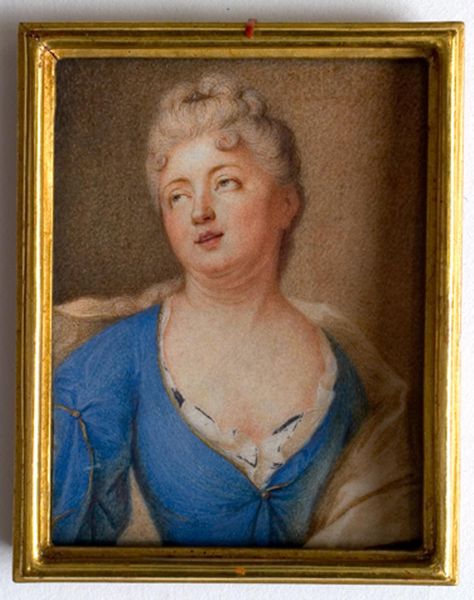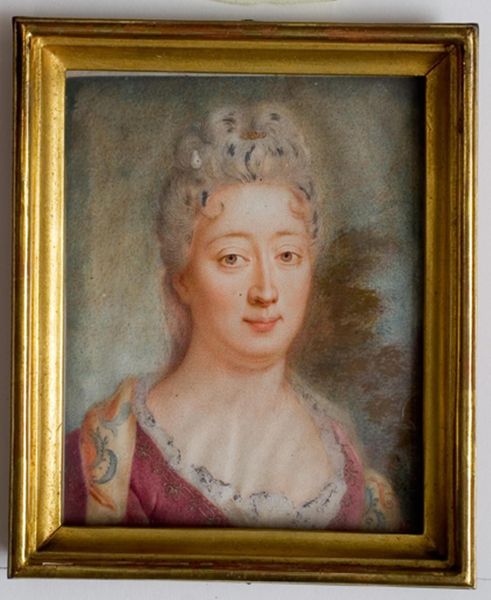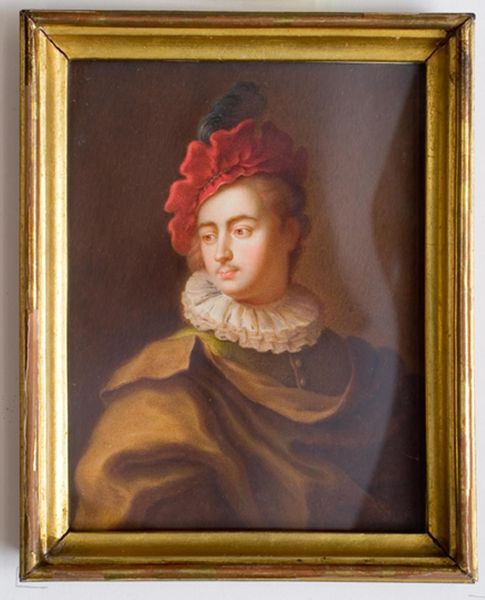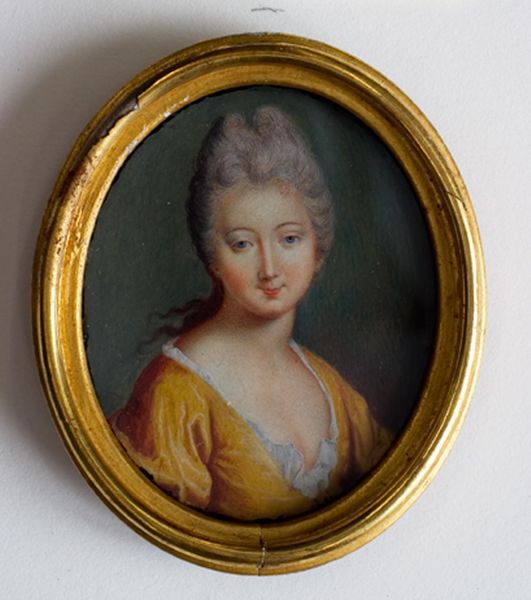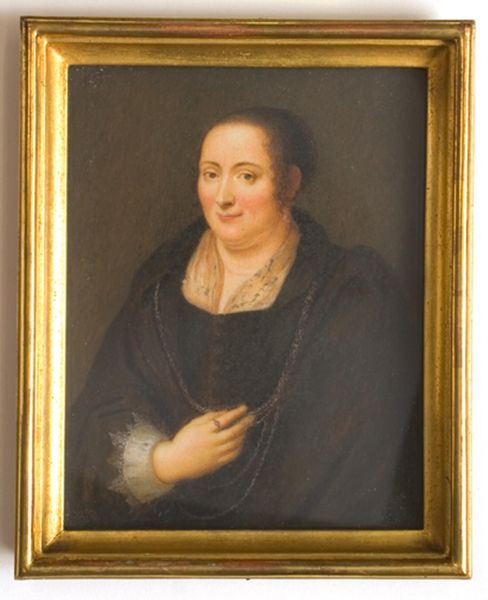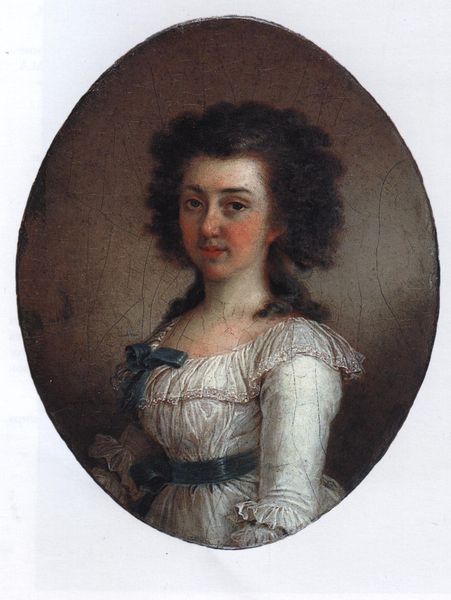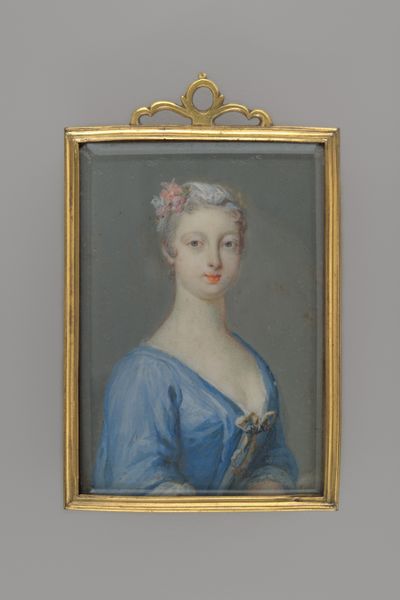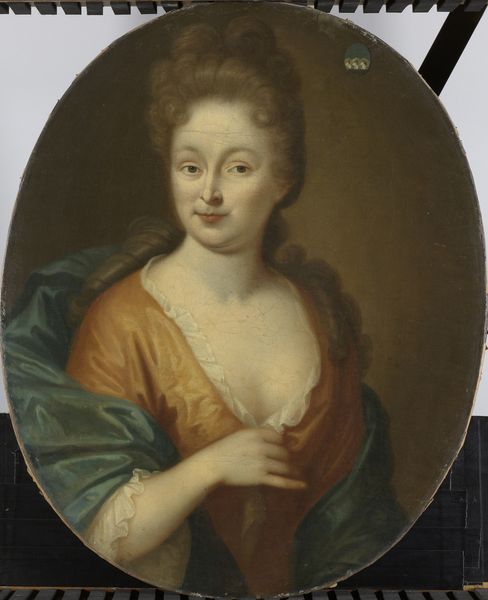
painting, gouache, enamel
#
portrait
#
painting
#
gouache
#
oil painting
#
enamel
#
miniature
#
rococo
Dimensions: 6.5 cm (height) x 5.1 cm (width) (Netto)
Editor: Here we have a miniature portrait, titled "Dameportræt," made sometime between 1726 and 1748 by David Gardelle. It's enamel and gouache. Looking at the way the light plays on her yellow dress, it makes me wonder – what strikes you about the creation of this piece? Curator: The size immediately signals the labor involved. Consider the skill and time needed to execute this level of detail on such a small scale using enamel and gouache. The materials themselves speak volumes about access and wealth, particularly enamel. Where were these materials sourced, and what kind of production networks supported their availability to Gardelle? Editor: So, it's not just about who is in the portrait, but about the material itself? Curator: Precisely! Think about the social context of miniature portraiture. They weren’t mass-produced objects but bespoke commissions for a specific clientele. How does the use of costly materials and painstaking techniques reinforce class divisions? Editor: That makes sense. So the actual paint is also speaking, conveying a message about power and who could access luxury. Curator: Absolutely. We could also ask how the demand for these kinds of portraits impacted artisanal labour practices. Did the rococo style displayed affect artistic production at this time, leading to innovations in painting or the refinement of certain methods? It highlights a dynamic intersection of skill, material value, and market forces. Editor: It’s fascinating to think about art history in terms of materials and production rather than just aesthetics or the subject of the painting. Curator: Indeed. It’s a lens that helps us see beyond the surface and engage with the complex world that birthed the artwork. Editor: I’ll definitely keep an eye out for the story within the materials now!
Comments
No comments
Be the first to comment and join the conversation on the ultimate creative platform.
